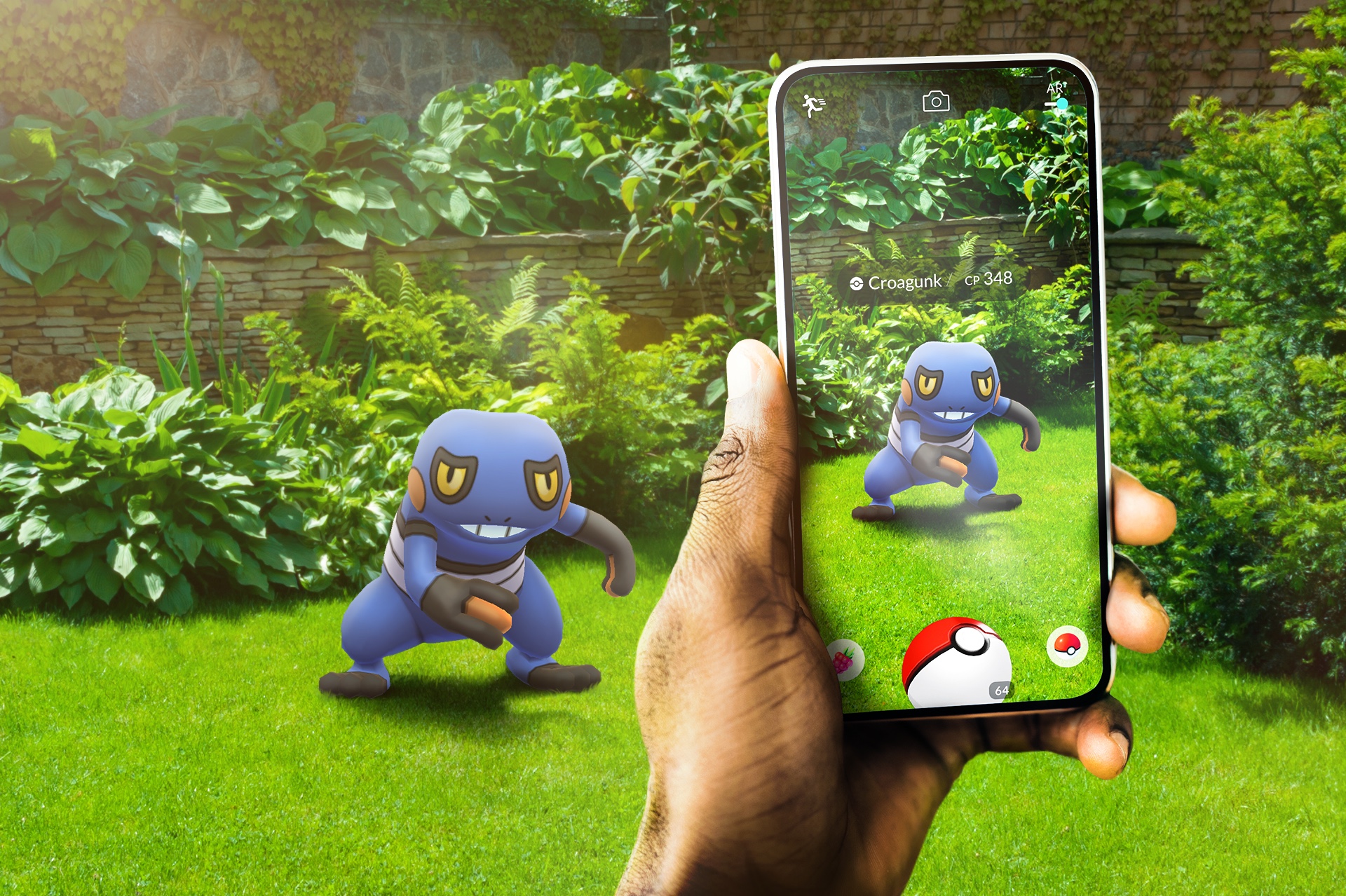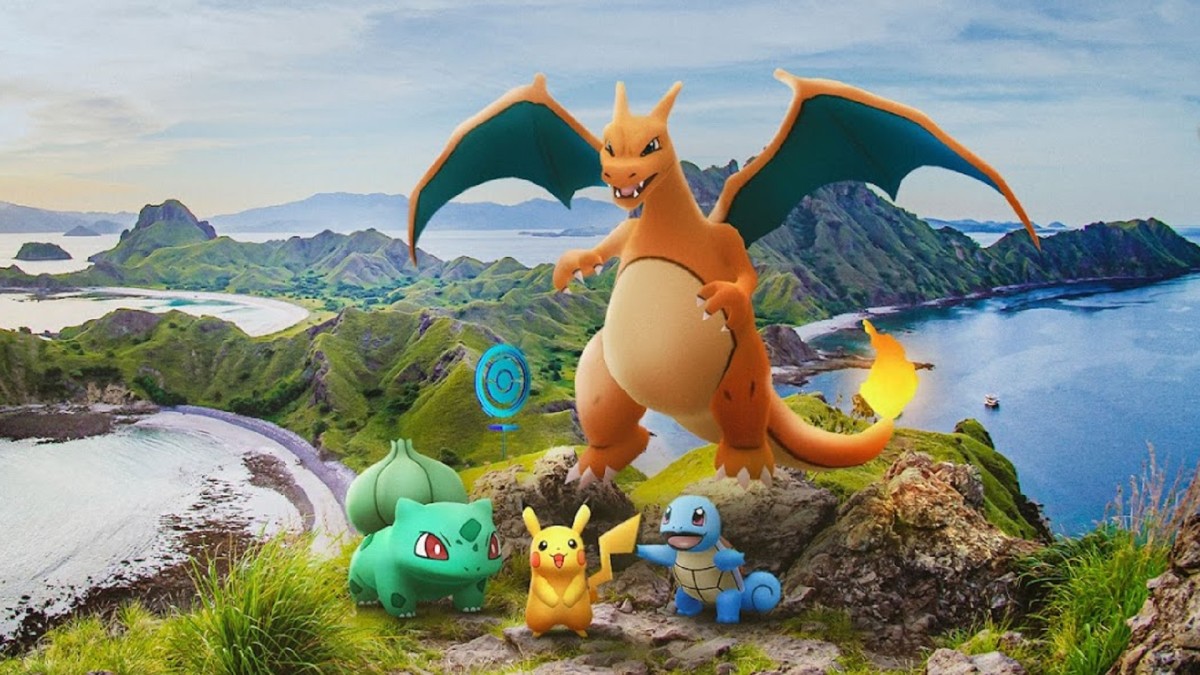Pokemon Go developer wants to change how we see the world

One of my favorite parts of going on holiday abroad is mapping out a new place. This path winds around to the beach, this one to the local shop, there’s a pharmacy here, and let’s not forget that this shop behind the resort sells suncream a lot cheaper than the tourist traps. Of course, this process is much easier these days, thanks to the digital maps on our smartphones. The entire world is in our pockets.
When you’re playing an open-world game with a minimap, you often find yourself looking at the little map instead of the gorgeously rendered landscapes you’re exploring. It’s a bit like that, isn’t it? Portable, digital maps are one of the best inventions of all time, but they often pull us out of our surroundings.
Pokemon Go developer Niantic wants to bring that sense of discovery back – a lofty goal for a developer who makes mobile games that are built on top of digital maps, using geolocation to turn your surroundings into a playing field. Games tend to suck us into our devices, after all.
Its first geolocation game, Ingress, just had its tenth-year anniversary. Pokemon Go is still going strong. NBA All-World is coming soon, along with a Marvel game and a new IP called Peridot, which allows you to raise a virtual pet in AR. While these are all different experiences, they all share the goal of trying to get people to reconnect with their environments by looking at their smartphones. Admit it, you were going to be looking at it anyway, right? That part of your brain that used to create mental maps is probably full of tweets by now.

Niantic CEO John Hanke co-founded a geospatial data company called Keyhole back in 2001, which was later acquired by Google. In his work at Google, he helped to implement much of the technology we all use today to find our way around. Hanke and his team were given as many resources as they needed and the end product was Google Maps, which later became Google Earth.
Once the powerful tool was in everyone’s hands, strange things started to happen. At one point, Hanke was invited to South Africa where, using the technology, amateur archeologists had found the oldest human remains ever uncovered. Scientists in the UK also discovered a valley that had never been touched, uncovering a range of undiscovered species. It opened up the world.
This is the same technology that powers apps like Uber, Yelp, and most major delivery services. It has changed the way we interact with our surroundings and there’s no going back to how things were before.
Hanke’s mission to reconnect us with reality might sound like PR speak, but it’s not the first time he’s changed the world. And as we’ve been shown over the last few years – whether it be on fitness apps, wellness apps, and even stat trackers for the media we consume – humans are drawn to engaging with things when they’ve been gamified.
Hanke grew up with games. For his first computer, he used money that he earned by doing chores around the neighborhood. If he wanted to play games, he often had to just make them himself.
“[Games] got me interested in software and technology and programming,” Hanke explains. “I've always loved games, but I didn't do anything professionally related to that for a while. But as we were building the technology for Google Earth, you look at the map and fly around, and it always made me think about games. I guess it was all the board games I played as a kid – Risk or whatever. I would see this and I would just think, ‘Wow, imagine all the cool games you could build on top of something like this.’”
That’s exactly what Niantic did with its range of geolocation titles, popularized by Pokemon Go. In that game, you walk around your neighborhood – or wherever you happen to be on that specific day – and you catch Pokemon who appear on the map, dotted around the world. You also battle other players at gyms and visit points of interest to get bonuses. You walk around in real life and your avatar moves in the game. Pokemon appear in augmented reality (AR) and you flick a Pokeball at them, but you’re essentially just playing with a map of your local area.

There’s something about maps that sets off the dopamine response in your brain. I recently fell down a Crusader Kings 3 hole, spending dozens of hours completely enraptured by medieval court drama and subterfuge, only to have a lightbulb moment where I realized that all I was really doing was making a map change color. That’s basically all grand strategy games are. But there’s something universal about wanting to master your surroundings, whether you’re painting a map red by moving armies about or you’re taking over the local Pokemon gym – we’re like dogs marking our territory in a world where peeing on a lamppost is frowned upon.
“National Geographic magazine was famous for having these beautiful foldout maps,” Hanke says. “So you'd have a full map and it would be the history of the pharaohs in Egypt or Alexander's conquest through the Middle East. And it's a way to present information in a way that our brains are somehow wired to understand. If I'm reading a narrative about Alexander's conquest, I can follow it, but it's work. But if you illustrate that on a map, all of a sudden you can see the countries and the names and locations of the movements. If you look at some of the earliest pictograms in caves, it's like: the animals are here, food is here, and you are here. I think we're just wired to understand things that way. I don't know about the game element of it other than, you know, we're also wired to play games.”
It’s a fair point. I’ve always felt connected to the world of George R. R. Martin’s A Song of Ice and Fire (or Game of Thrones) series, and a lot of that is down to the map illustration at the start of each book. For the show, they achieve the same in the title screen, which pans the camera across the landscape and shows how King’s Landing connects to Winterfell, and how far south that is from the wall. When I picked up The Elder Scrolls: Morrowind on a whim as a kid, it was studying the foldout map on the bus ride back that made me want to persevere after being ganked by a mud crab for the 50th time. Maps allow us to become explorers in a world that has already been explored. Niantic’s games offer similar thrills.
“It's harder for us to be those great adventurers, that's true,” Hanke says. “Maybe we'll go to Mars – maybe Elon Musk will let us continue that. But I think AR opens the door for that in a lot of ways by adding this creative element to the real world. Places that are familiar to you take on this whole new aspect – the statue in the park is now this mysterious portal to another dimension, or the corner office building is a Pokemon Go gym.
“I also think that maybe the grand discoveries – the source of the Nile, etc. – have already been made, but our habits, as modern humans, cause us to not necessarily see and appreciate all this stuff that is even in our cities because we are kind of on autopilot. I think one of the things that has happened with people playing our games is that it's caused them to divert off their own path and go and discover things. Like, ‘Oh, there's this beautiful little park in a neighborhood not too far from my house, I didn't know it was here. And it has some history to it. Maybe I'll bring my kids here.’”

Hanke says Niantic feels a responsibility to reconnect people to the planet in a world where people walk around glued to their devices, and he understands the irony of saying that as the CEO of a company that creates smartphone games.
“It is a fine line,” he says. “Because these devices do tend to suck our attention, and I think it's a big challenge for society right now, frankly. We are trying to use the device as a way to help people see and connect and appreciate things out in the physical world. But hey, this is tech. Some things are not positive about it. But if it's used in the right way, it can have a positive impact.”
Niantic’s first game, Ingress, was inspired by Hanke’s homelife and his struggles to get his children to go out and appreciate the beauty of California, which is something he didn’t have when growing up in the dustbowl of Texas. Much to his chagrin, they’d rather stay at home and play Minecraft.
“California feels like a theme park to me, and it drives me crazy that my kids… it's hard to get them interested,” he says. “The idea of our first game, Ingress, was to leverage the things about video games that are fun and interesting and to combine that with moving around and going to new places. Chocolate and peanut butter, this could go together.”

Still, if you eat chocolate and peanut butter all the time, you’ll eventually get bored of it. You’ve still gotta mix things up every now and then, and maybe treat yourself to some tiger bread to spread it on. It’s a very human thing to keep pushing a concept, whether it’s a sandwich or technology.
Geo games like Pokemon Go were born from technological advancements, and the future of the genre will likely be dictated by the very same.
Hanke imagines a future where the entire world is a game board and everyone wears AR glasses that can project their favorite games onto any environment. And this year’s CES technology expo convinced him that it’s achievable, thanks to a series of recent AR showcases.
“I think the industry is looking at that and realizing that walking around and constantly putting this [phone] in and out of our pocket, and dropping it on the ground, and juggling it with our cup of coffee as we're trying to get our kids to school or something, it's not perfect, as amazing as it is as an invention. It's not the end of the evolutionary tree for technology.”
It might sound far-fetched to us today, but go back and tell your grandparents that future humans will be able to navigate any place at any time and never get lost, using a supercomputer that fits in the palm of their hand.
